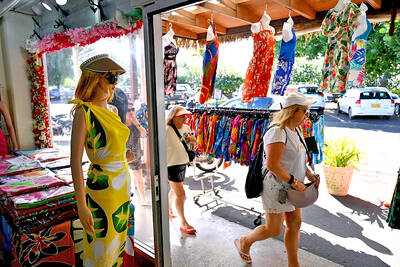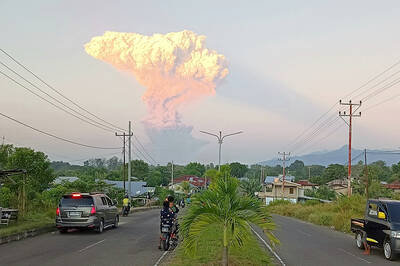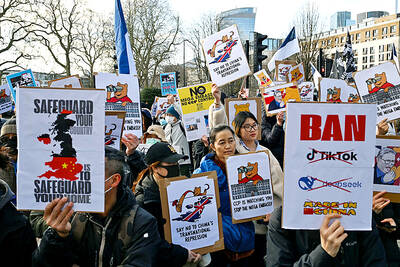Shirin does not consider herself too posh to push, but like many other women in Iran the 32-year-old has opted to have her baby by Caesarian section.
Medical officials say 40 percent of children in Iran are born by C-section, but the percentage in Tehran is as high as one in every two deliveries — and it is greater than 60 percent in Isfahan and Gilan provinces.
“The World Health Organisation recommends a cesarean section rate of 10 to 15 percent,” said gynecologist Nasrin Changizi, who heads the mothers’ health bureau in the Iranian health ministry.
Shirin, a secretary in a construction company, said it was the thought of the pain during labor and the damage she feared could be inflicted on her body that encouraged her to choose a “planned” delivery.
“Why shouldn’t I enjoy the benefits of science when it is available?” she asked in a Tehran clinic, as she waited along with a dozen other women to have a color ultrasound of her baby.
All but one of the mothers-to-be said they planned to give birth by cesarean section.
Shirin will spend 15 million rials (US$1,600) on the procedure and hospital expenses, and her health insurance will cover only two million rials of that. The rest will have to come from family savings.
“But it is worth it,” she said.
Changizi said Iranian women were not generally well-informed about the benefits and risks involved with each form of childbirth and that an elective C-section potentially had more side effects than natural child birth.
“It is crucial to have a beautiful experience to promote normal vaginal delivery,” she said, conceding that some women were put off by the thought.
Doctors concerned about the health of both mother and child are quick to end the natural process at the slightest sign of complications, Changizi said, adding that they may also be concerned about facing malpractice complaints.
She said many doctors were unwilling to deliver babies naturally because of the long hours women can spend in labor — and also the significant difference between the fees for C-sections and natural childbirth.
Shabnam’s friends and cousins told her she was out of her mind when she announced she wanted to give birth naturally.
The 27-year-old, who is due in three months, said she was lucky to find a good doctor who did not frown at her choice, even though her own mother disagrees with her decision.
“I want a painless delivery, but three doctors turned me down politely,” she said.
Doctor Pooran Hajian says it is basically the pain that scares women off natural birth, but that there are downsides associated with both methods of delivery.
“To me it makes no difference. If the mother’s pelvis is appropriate I suggest natural birth, but 99 percent of my patients want a C-section,” Hajian said.
She said if health officials sought to promote painless deliveries and offered this in state hospitals, which charge very little or nothing, more women would be willing to try it and the word would spread.
Iran prides itself on good family planning and maternal health. Officials say the maternal mortality rate was 24.6 per 100,000 live births in 2005 — compared with nine in developed nations and 160 in western Asia.
But alarmed by the number of cesarean births carried out when not medically necessary, Iran plans to reduce C-section rates to between 20 percent and 25 percent of uncomplicated births by 2013.
Health officials have begun offering retraining workshops for obstetricians to promote birth with minimum intervention and without inducing labor.
“When a mother is taught to control fear, labor pains can be controlled or reduced without medication,” Changizi said.
She said state media needed to better educate women about the benefits and hazards involved in their choice of how have their babies.
“Women are concerned about pelvic relaxation in natural delivery, but they overlook the side effects of a cesarean,” she said. “We want doctors to give the mother all the information and then let her choose.”

‘SHORTSIGHTED’: Using aid as leverage is punitive, would not be regarded well among Pacific Island nations and would further open the door for China, an academic said New Zealand has suspended millions of dollars in budget funding to the Cook Islands, it said yesterday, as the relationship between the two constitutionally linked countries continues to deteriorate amid the island group’s deepening ties with China. A spokesperson for New Zealand Minister of Foreign Affairs Winston Peters said in a statement that New Zealand early this month decided to suspend payment of NZ$18.2 million (US$11 million) in core sector support funding for this year and next year as it “relies on a high trust bilateral relationship.” New Zealand and Australia have become increasingly cautious about China’s growing presence in the Pacific

Indonesia’s Mount Lewotobi Laki-Laki yesterday erupted again with giant ash and smoke plumes after forcing evacuations of villages and flight cancelations, including to and from the resort island of Bali. Several eruptions sent ash up to 5km into the sky on Tuesday evening to yesterday afternoon. An eruption on Tuesday afternoon sent thick, gray clouds 10km into the sky that expanded into a mushroom-shaped ash cloud visible as much as 150km kilometers away. The eruption alert was raised on Tuesday to the highest level and the danger zone where people are recommended to leave was expanded to 8km from the crater. Officers also

The team behind the long-awaited Vera Rubin Observatory in Chile yesterday published their first images, revealing breathtaking views of star-forming regions as well as distant galaxies. More than two decades in the making, the giant US-funded telescope sits perched at the summit of Cerro Pachon in central Chile, where dark skies and dry air provide ideal conditions for observing the cosmos. One of the debut images is a composite of 678 exposures taken over just seven hours, capturing the Trifid Nebula and the Lagoon Nebula — both several thousand light-years from Earth — glowing in vivid pinks against orange-red backdrops. The new image

ESPIONAGE: The British government’s decision on the proposed embassy hinges on the security of underground data cables, a former diplomat has said A US intervention over China’s proposed new embassy in London has thrown a potential resolution “up in the air,” campaigners have said, amid concerns over the site’s proximity to a sensitive hub of critical communication cables. The furor over a new “super-embassy” on the edge of London’s financial district was reignited last week when the White House said it was “deeply concerned” over potential Chinese access to “the sensitive communications of one of our closest allies.” The Dutch parliament has also raised concerns about Beijing’s ideal location of Royal Mint Court, on the edge of the City of London, which has so